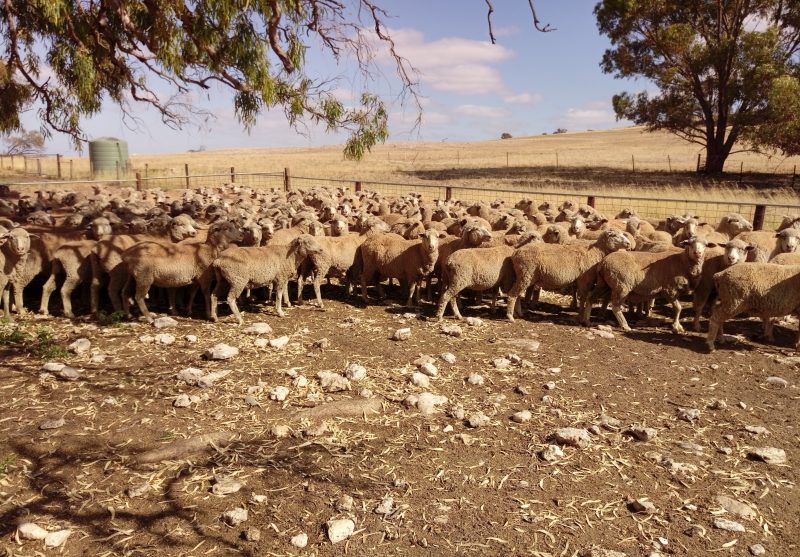Dohnes a Good Influence
BILL NOSWORTHY
SHERINGA, SOUTH AUSTRALIA
ALREADY benefitting from the excellent sheep country that is the Eyre Peninsula, South Australia, Bill Nosworthy is ensuring his operation is one of maximum productivity.
‘Lake Hamiliton’, Mr Nosworthy’s 16,000 hectare property, sits on the west coast of the Eyre Peninsula, mainly suited to stock with its typically rough country and natural pasture base, including native medic, spear and wallaby grasses.
Running 4,500 Merinos at the time, Mr Nosworthy’s interest in Dohnes was sparked 10 years ago as a lot of other producers were beginning to explore the breed.
“I went and bought a few Dohne rams and ran them with some good Merino ewes at our other property at Lock, a 2000 hectare block in central Eyre Peninsula,” said Mr Nosworhy.
“After a couple of years, I realised that the progeny were better than their Merino mothers, turning out to be stronger, more robust animals, cutting just as much, if not more wool.”
Typically having 15 or so good Dohne rams on hand, Mr Nosworthy looks to their traits to provide his flock with good bodies and good quality, consistent wool cut. From day one, he believed they were going to give a very vigorous hybrid cross.
“We want to retain the wool cut as that accounts for over half our income. The breed has also shown its potential in increasing the value of our sale lambs, which results over the last three years have proven.”
“For a long time we were languishing in the $40-60 range and now we’re more in the $100-120 due to a better grown, rounder-bodied sheep,” said Mr Nosworthy.
The aim is to get Lake Hamilton running sheep that have as much Dohne influence in their breeding as possible.
“Putting our Dohne rams with our older ewes always produced us a lot of lambs, lambing at 90% and giving us great return,” said Mr Nosworthy.
“It was our maiden ewes that were giving us lower lambing percentages, sitting at around 70-75%. After the
success of the Dohne rams with the older ewes, I thought I’d trial the maidens with our Dohne rams and see if we get an increased percentage of live lambs.”
“This worked nicely, seeing lambing now up toward 80%, and this year, 96%. We’ve seen an increase in survival rate as the lambs are robust, quick-developing, well-weighted and haven’t compromised on wool cut.
They are also a much smaller lamb at birth, which helps a maiden ewe have a much easier delivery.” Dohne traits benefit faster growth-weight, better survival at lambing and a final product that is in great condition – whilst still receiving Merino-quality wool.
“To me, the Dohne was a logical choice. They make better use of the available feed, and maintain body weight during hard times. The breed has developed an enormous amount in the last 20 years, with a strong selling point being they can be easily introduced into a Merino flock making for an easy transition.”
Original article written by Nicola Wood, July 2020.











 Facebook
Facebook YouTube
YouTube Instagram
Instagram